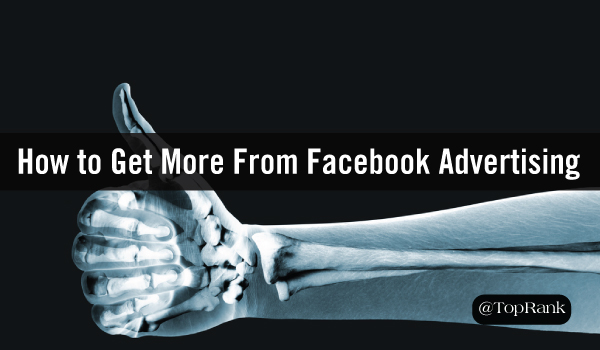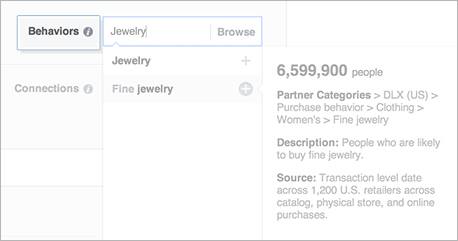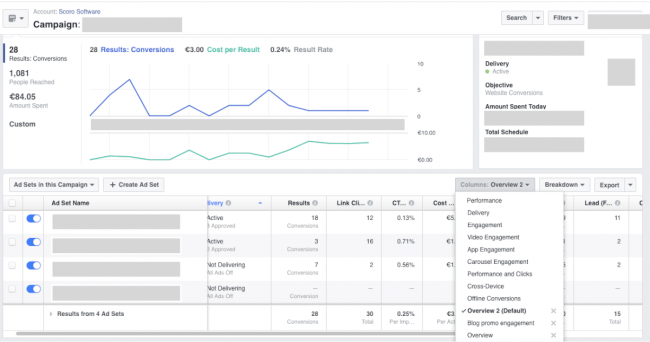
Gather around, children, and let me tell you a story of Facebook advertising in the long-forgotten year of 2012. In that gilded age, whenever your page posted an update, up to 20% of your followers would see it in their feeds organically.
It was a simpler time. A gentler time. And a time when Facebook took in a lot less revenue from advertisers.
Then in 2016, organic reach fell off the cliff (Or was it pushed?), sinking to as low as 2% of a page’s followers.
The moral of the story is: If you want to reach a sizable audience on Facebook now, you’re going to have to pay. But as our friends (and clients) over at LinkedIn Marketing say, “Organic is good. Paid is better.”
Why settle for the audience that happens to wander by? Why settle for the audience Facebook thinks wants to hear from you? With a little investment, you can bring in an audience that is perfect for your offer. And you can keep refining your targeting over time to get even more out of your budget.
Here’s how to get the most out of your sponsored content on Facebook.
Zero In on Your Audience
Most people who use Facebook entrust the site with an astonishing array of personal information. I’m not talking names, addresses or phone numbers (though plenty of people surrender that info as well)). We’re talking what businesses they frequent, what public figures they admire, what pop culture they like, and more. As a marketer, all of that information is at your fingertips.
You can start to build your targeted segment based on demographics like age, occupation, and education. Then take it to the next level with interest and behavior-based filters.
Say you’re selling a self-help book. You might pick an audience that also likes Tony Robbins and has visited other self-help websites, for example. That means filtering by Interest (pages and categories people have liked on Facebook) and by Behavior (actions taken on and off Facebook). Here’s an example of what Behaviors look like in Facebook Ads Manager:

Create a Lead Capture Page
Once you have defined your audience, it’s time to create a page that will compel a click. This is the landing page your ad will lead to—it needs to close the deal for people who already clicked from Facebook.
Start with an asset that is worth trading some contact information for. Offer real data-based, demand-based, substantial best answer content. Then set up your landing page with:
- A brief headline (60 characters or less!) with a statement of benefit
- An inviting image (can’t go wrong with happy people)
- A little proof (testimonial quote or stats)
- A big, friendly CTA button with custom text (“Get your guide” vs. “Download”)
Create your Ad
You can either design your landing page or your ad first. Whichever order you do it in, your landing page should look as much like your ad (or vice versa) as possible. Use the same fonts, same verbiage, same image. There should be no doubt in your customer’s mind that they’ve come to the right place when they click through.
Be sure to follow Facebook’s advertising policies, and to keep your copy short and to the point. Research shows that posts with 80 characters or fewer get far more engagement than wordier posts. Up to 66% more engagement, in fact. So be brief!
It’s important to create a few versions of the ad for A/B testing. Test variations in the headline, copy, and image.
Create a Trackable Conversion
In order for you to track the effectiveness of your ad, Facebook needs to know what happens to visitors after they leave Facebook to visit your site. Adding a Facebook Pixel to your pages makes that possible. It’s a little piece of code that tracks behavior of traffic from your ads to pages you specify, making it easy to attribute conversions and retarget ads (more on that later).
Once you create the pixel and add it to your pages, you can create event code to put on a specific page. Place the code on your thank you page (after the visitor has filled out our lead form) and you can use it to track conversions:

Here’s Facebook’s guide to creating a conversion in the Ads Manager.
Run Multiple Variants of Your Ad
Always run a few variants of your ad at the same time, so you have data to evaluate performance. In addition to testing variations on the ad copy and visual, test variant audiences. Take advantage of the thousands of targeting options to try a few different sets and see what hits. You can always turn off the underperformers and focus your budget on what works.
Analyze & Optimize
As you run your campaigns, keep a close eye on your analytics. Facebook’s Ads Manager has some pretty robust reporting abilities, especially with your pixel and conversion properly configured:

You will be able to see your CTR, break down the clicks by demographic, and see your cost per click (CPC) at a glance. Use all this information to refine your campaigns—switch off the ones that aren’t performing and try new variants, while boosting the variants that perform the best.
Retarget & Lookalike
Not everyone who clicks through is going to complete your conversion goal, of course. That’s why retargeting is so important. Retargeting means making a custom audience on Facebook of people who have visited your website (tracked by your pixel), and using that data to serve ads to them again until they convert.
For extra bonus points—by which I mean, a larger relevant audience and more conversions—select the “lookalike audience” option for your retargeting. In addition to traffic that has visited your site, Facebook’s algorithms will serve the ad to people with similar demographics and interests to your website traffic.
Book Only the Most Relevant Faces
Even with the most compelling content, it’s hard to get organic reach on Facebook. Of course, any traffic is better than none—and if the content’s good, it has a chance of getting shared and amplified over time. So don’t discount organic entirely. But it’s definitely time to start thinking of Facebook primarily as a paid platform, and to take full advantage of its potential.


